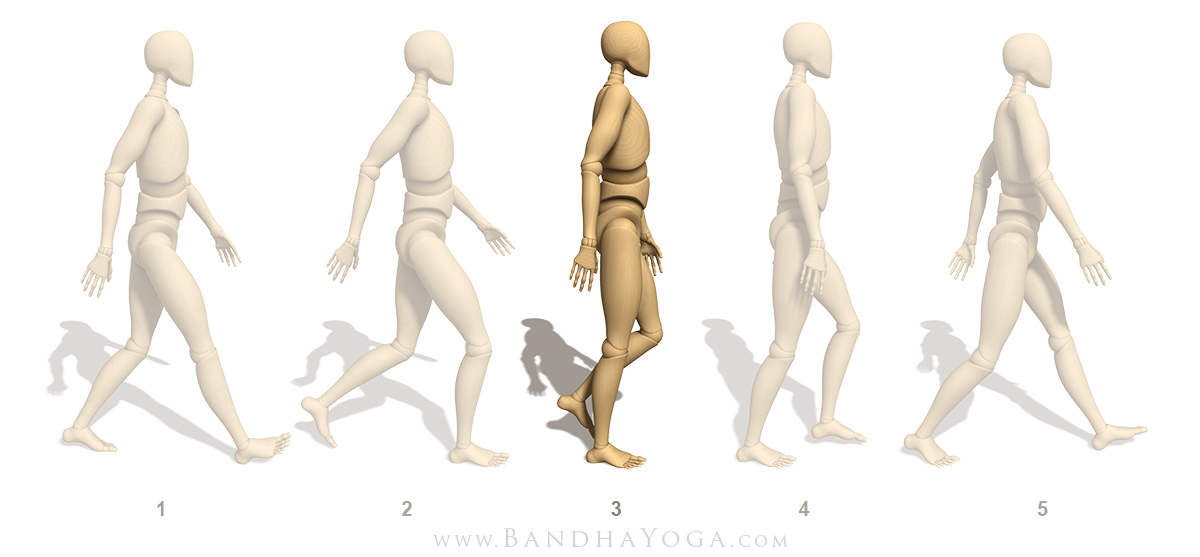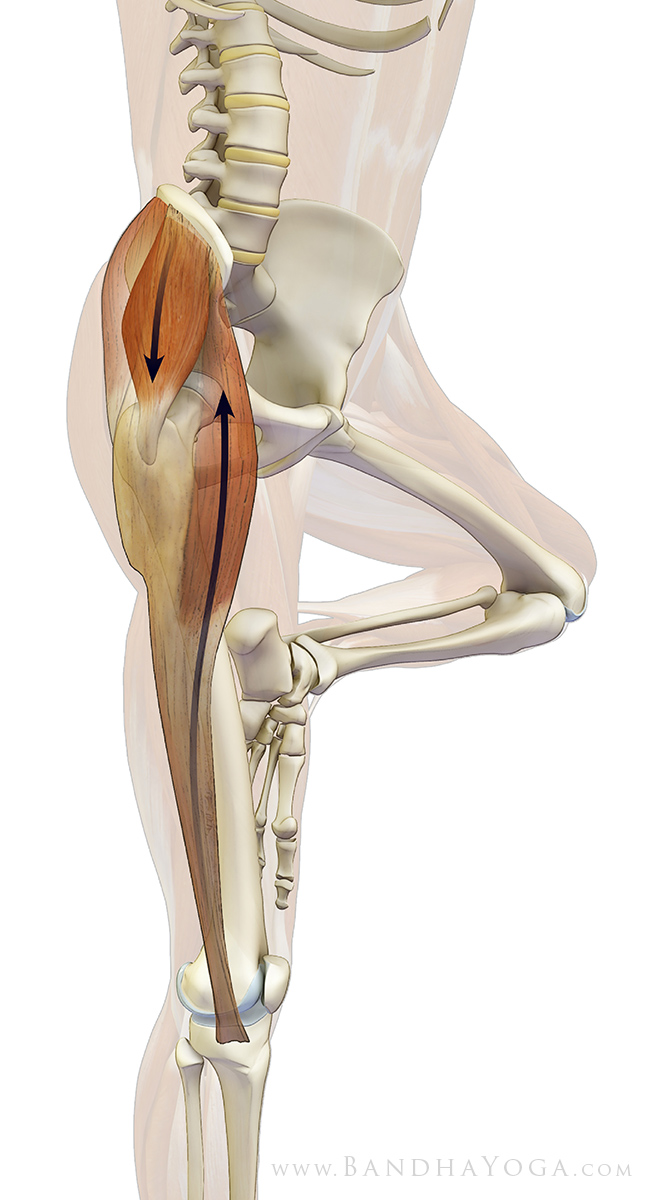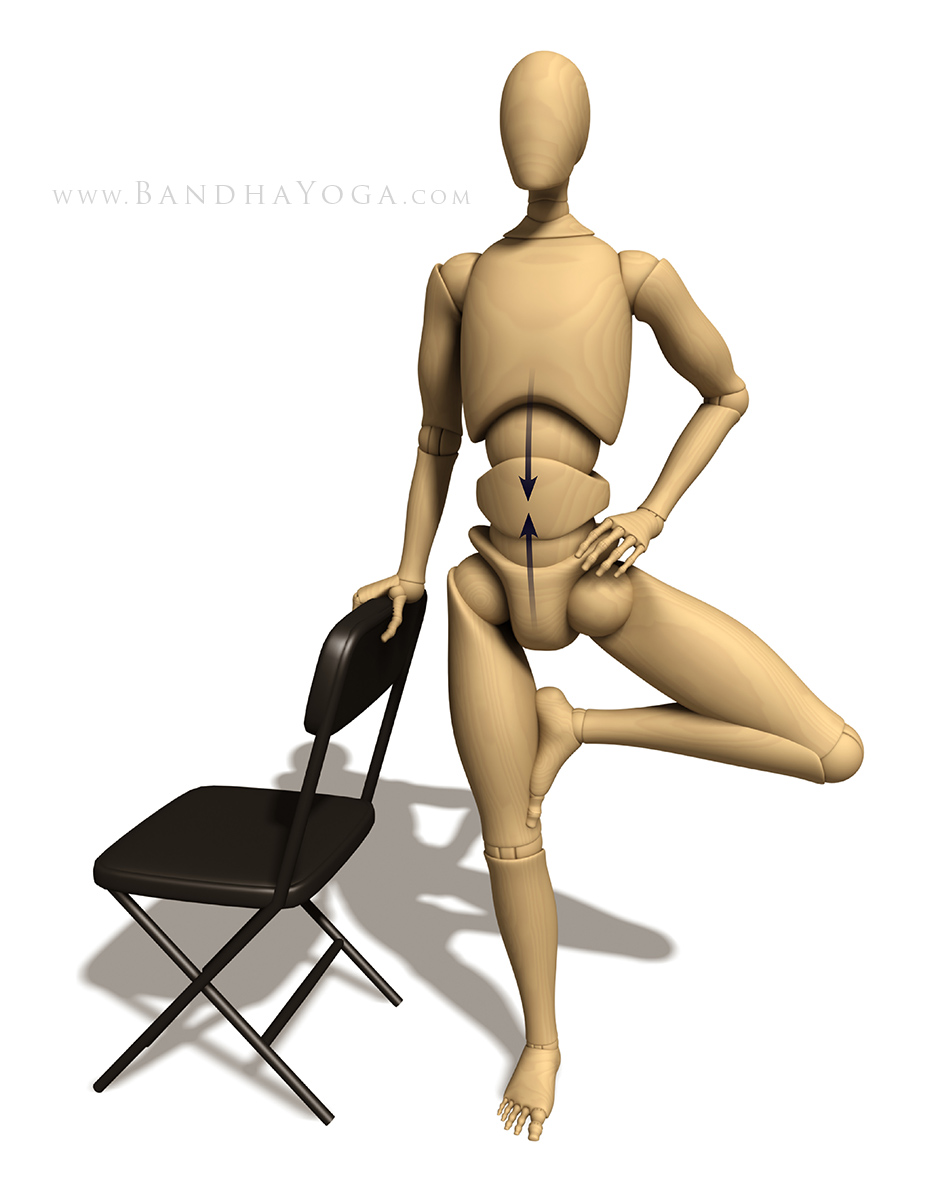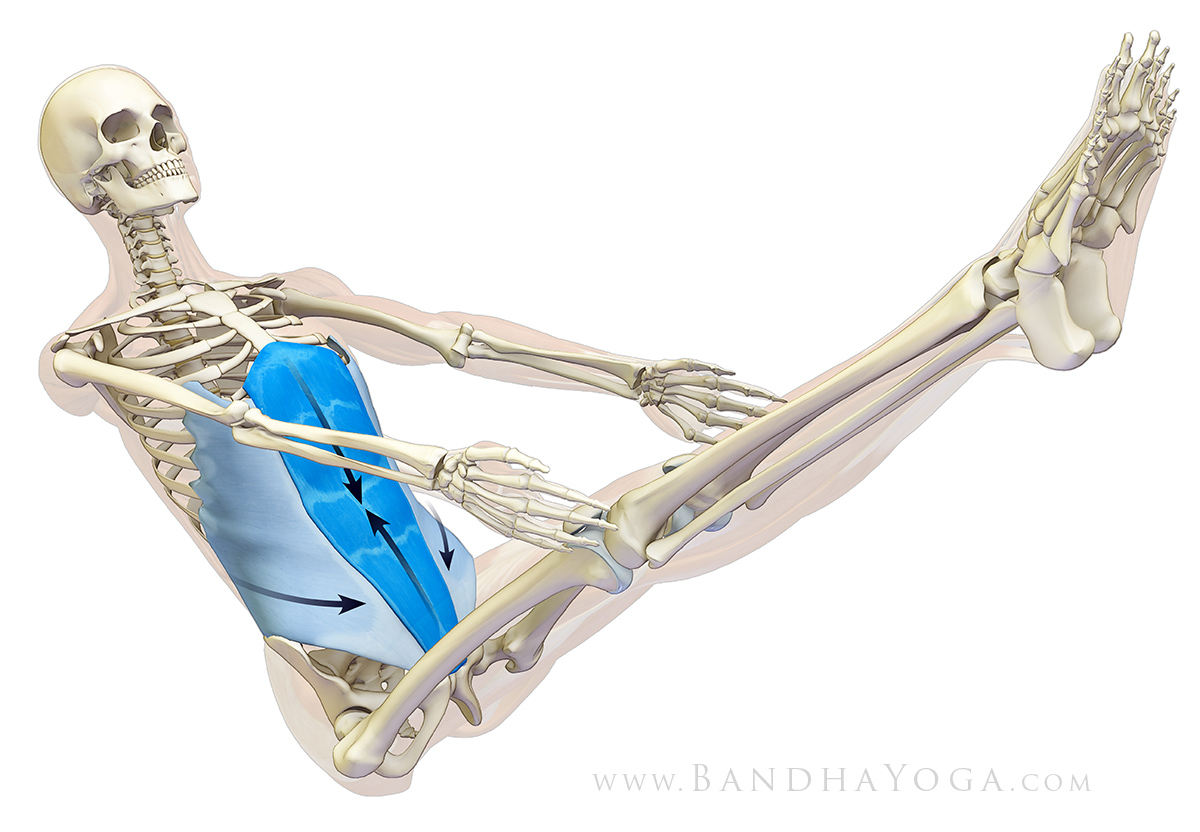Practicing yoga benefits our activities of daily living. We breathe easier, sit more comfortably and feel stable and strong when standing and walking. For this post, we’ll focus on the muscles that are active during the “mid-stance” phase of walking—which is essentially a one legged standing pose. Then we’ll develop some cues for engaging these muscles to improve stability in poses such as Tree pose and Hasta padangustasana. Improved stability in these asanas in turn enhances the beneficial effects of the practice.
 |
| Figure 1: Illustrating the phases of gait with the mid-stance phase highlighted. |
The walk cycle is traditionally divided into several phases, as illustrated in figure 1. Researchers have used surface EMG’s to detect which muscles are most active during each of the various phases of walking. For example, during the mid-stance phase, the hip muscles that show a higher level of contraction include the gluteus minimus and tensor fascia lata (figure 2). The gluteus minimus helps stabilize the head of the femur (ball) in the acetabulum (socket). The tensor fascia lata acts to stabilize the pelvis and knee. These muscles engage automatically when we stand on one leg (unless there is an underlying pathological condition). We can improve their function in one legged standing poses by consciously engaging them in a variety of other asanas, including Downward dog, Uttanasana, and Upavista konasana.
 |
| Figure 2: The gluteus minimus stabilizing the head of the femur in the acetabulum and the tensor fascia lata (and gluteus medius) stabilizing the pelvis. Note that the TFL also stabilizes the knee. |
Another muscle that is active during the mid-stance phase of gait is the rectus abdominis, which runs from the pubis to the front of the ribcage and xiphoid process of the sternum. This muscle aids to stabilize the lumbar spine and pelvis during this part of the walk cycle (figure 3). Consciously engaging the rectus abdominis during one legged standing poses thus helps to maintain balance. The transversus abdominis also contributes to stability through its myofascial connection to the thoraco-lumbar fascia.
 |
| Figure 3: Illustrating activation of the rectus abdominis in Tree pose. |
Here’s the cue…
Begin by working with a support, such as a chair or the wall so that you can focus on integrating the muscular engagement without having to also focus on balancing (figure 4). Take Tree pose (Vrksasana) and, on your exhalation, gradually tense the abdomen; a visual cue is to draw the navel inward. Activating the abdominal muscles increases intra-abdominal pressure and tightens the thoraco-lumbar fascia, thus lifting the torso and stabilizing the lumbar spine. Working with the abdominals also amplifies the mind body connection to this region, creating a "functional focal point".
 |
| Figure 4: Engaging the abdominals in supported Tree pose. |
Cues for stabilizing the core are best worked with over a period of several practice sessions (using a support for balance). The targeted muscular engagement becomes increasingly refined and efficient with each successive session and is easier to use with the final pose.
 |
| Figure 5: Engaging the abdominals in Navasana. |
Other poses that improve core strength, especially that of the abdominal muscles, include Navasana (figure 5) and Chaturanga dandasana (figure 6). Click here for a tip on co-activating the gluts and abs in this pose. For many more techniques and practical cues on integrating Western science into your practice, check out the Mat Companion Series and The Key Muscles and Key Poses of Yoga (use the “look inside” feature to page through the entire books).
 |
| Figure 6: Co-activating the gluts and rectus abdominis in Chaturanga dandasana. |
Thanks for stopping by the Daily Bandha. Stay tuned for our next post when I'll present another subject on combining science and yoga. Also, we greatly appreciate when you share us on Facebook, Twitter and Google Plus.
Namaste'
Ray and Chris
References:
1) Crommert ME, Ekblom MM, Thorstensson A. “Activation of transversus abdominis varies with postural demand in standing.” Gait Posture. 2011 Mar;33(3):473-7.
2) Winter DA: The biomechanics and motor control of human gait: normal, elderly and pathological, ed 2, Waterloo, Canada, 1991, University of Waterloo Press.